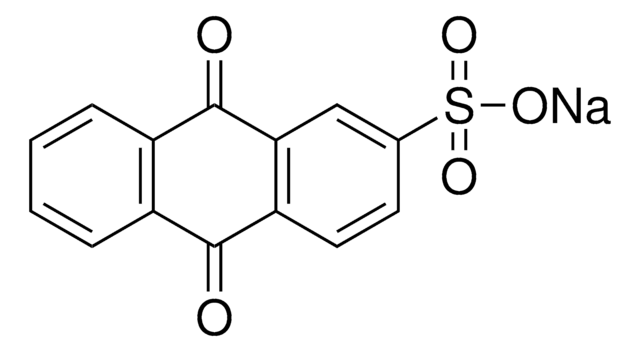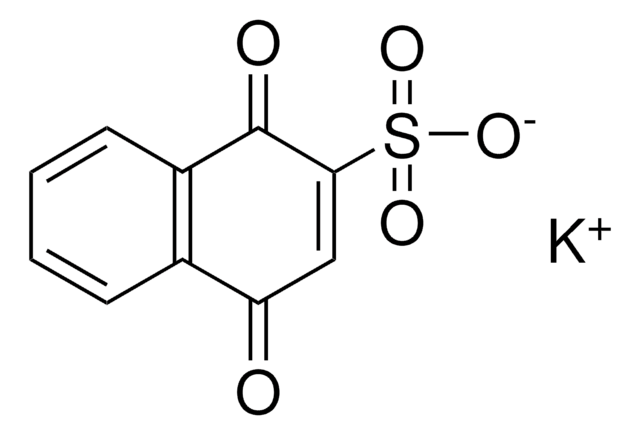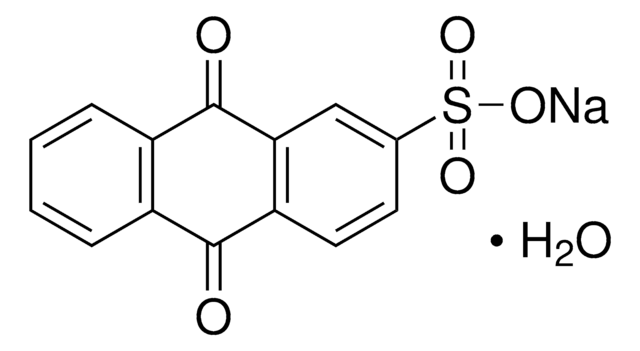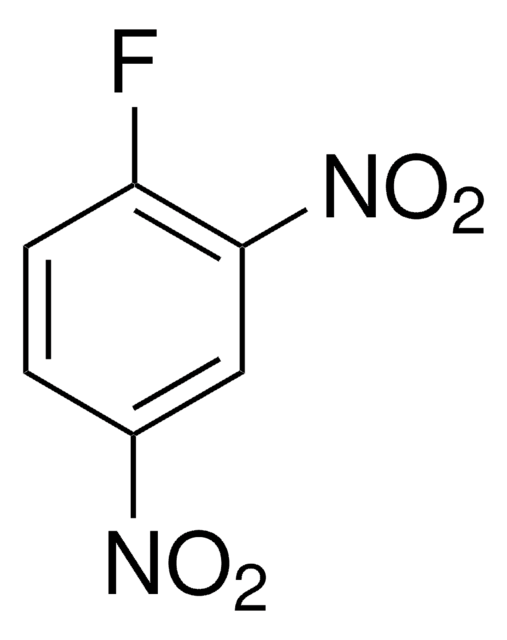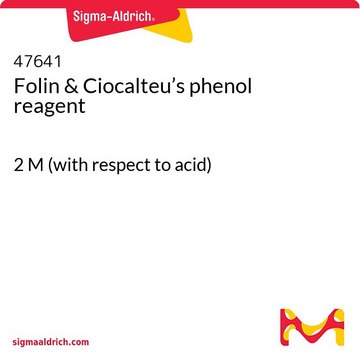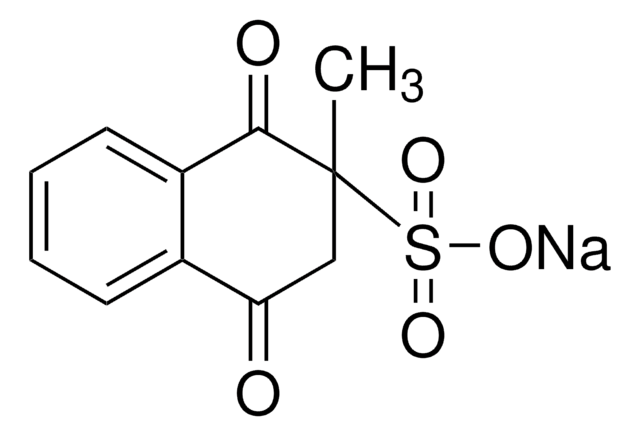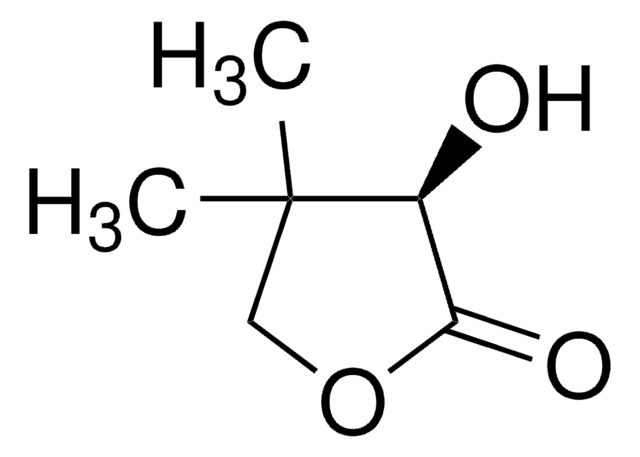Kluczowe dokumenty
226017
1,2-Naphthoquinone-4-sulfonic acid sodium salt
97%
Synonim(y):
3,4-Dihydro-3,4-dioxo-1-naphthalenesulfonic acid sodium salt, Folin’s reagent, Sodium 1,2-naphthoquinone-4-sulfonate
About This Item
Polecane produkty
Poziom jakości
Próba
97%
Formularz
powder
mp
289 °C (dec.) (lit.)
rozpuszczalność
alcohol: slightly soluble 95%
acetone: moderately soluble(lit.)
benzene: insoluble(lit.)
carbon disulfide: insoluble(lit.)
chloroform: insoluble(lit.)
diethyl ether: insoluble(lit.)
petroleum ether: insoluble(lit.)
water: soluble(lit.)
grupa funkcyjna
ketone
sulfonic acid
ciąg SMILES
[Na+].[O-]S(=O)(=O)C1=CC(=O)C(=O)c2ccccc12
InChI
1S/C10H6O5S.Na/c11-8-5-9(16(13,14)15)6-3-1-2-4-7(6)10(8)12;/h1-5H,(H,13,14,15);/q;+1/p-1
Klucz InChI
UBLXEEBHYISRFM-UHFFFAOYSA-M
Szukasz podobnych produktów? Odwiedź Przewodnik dotyczący porównywania produktów
Powiązane kategorie
Zastosowanie
Kod klasy składowania
11 - Combustible Solids
Klasa zagrożenia wodnego (WGK)
WGK 3
Temperatura zapłonu (°F)
Not applicable
Temperatura zapłonu (°C)
Not applicable
Środki ochrony indywidualnej
dust mask type N95 (US), Eyeshields, Gloves
Wybierz jedną z najnowszych wersji:
Masz już ten produkt?
Dokumenty związane z niedawno zakupionymi produktami zostały zamieszczone w Bibliotece dokumentów.
Klienci oglądali również te produkty
Nasz zespół naukowców ma doświadczenie we wszystkich obszarach badań, w tym w naukach przyrodniczych, materiałoznawstwie, syntezie chemicznej, chromatografii, analityce i wielu innych dziedzinach.
Skontaktuj się z zespołem ds. pomocy technicznej